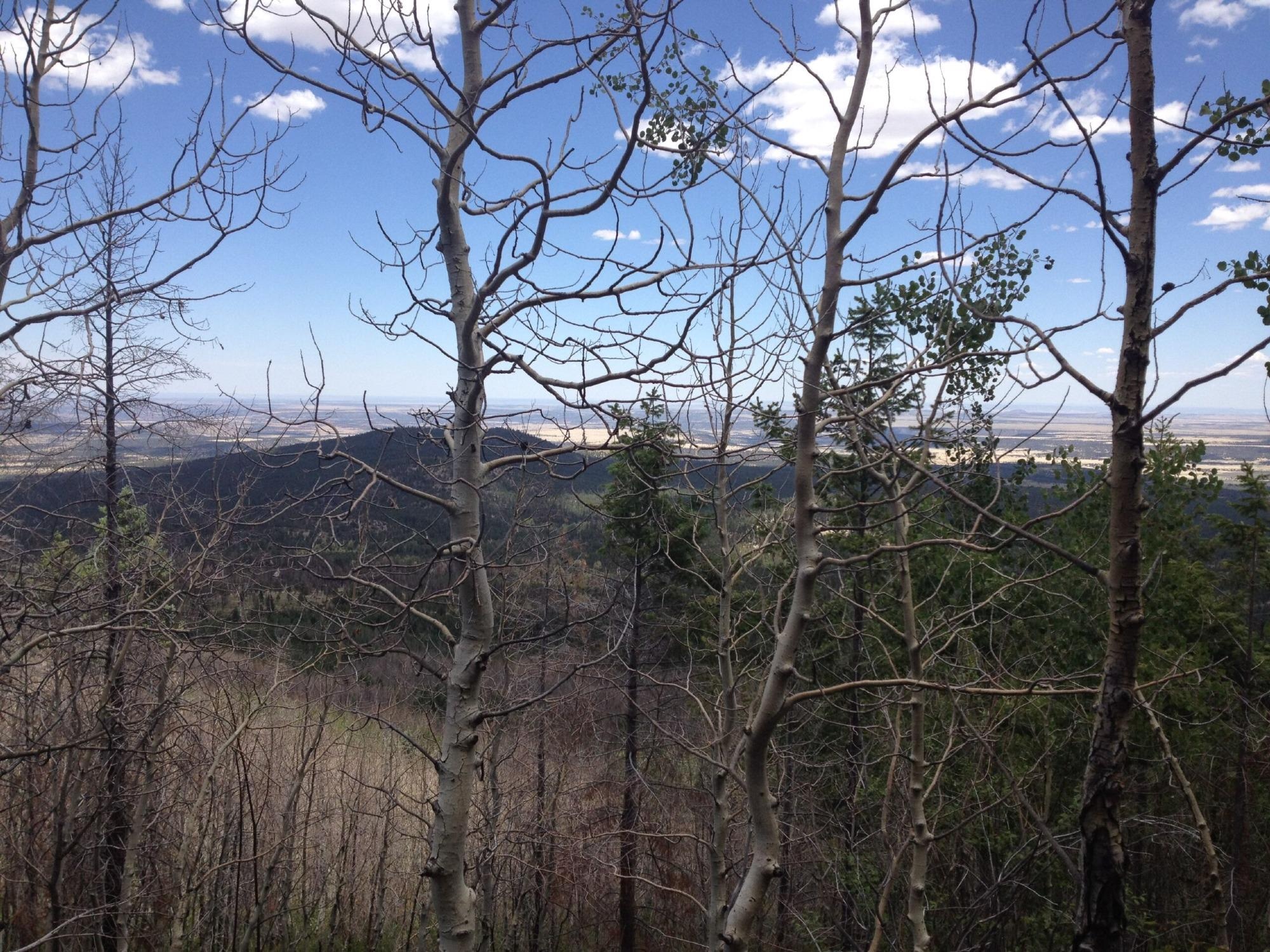Planting a tree is the best thing that can be done for the well-being of the environment as the trees take in carbon dioxide, compensating for a few of the emissions that add up to climate change.
 Stressed and dying forests in the western U.S. Image Credit: William Anderegg.
Stressed and dying forests in the western U.S. Image Credit: William Anderegg.
However, all of that carbon present in trees and forests across the globe could be thrown back into the air again if the trees burn up forest fires. Also, trees stop scrubbing CO2 from the atmosphere if they die as a result of drought or insect damage.
According to a new study, the probability of those threats affecting forests is growing. This means that depending on forests to soak up carbon emissions is a much riskier prospect.
The study has been reported in the journal Ecology Letters.
U.S. forests could look dramatically different by the end of the century. More severe and frequent fires and disturbances have huge impacts on our landscapes. We are likely to lose forests from some areas in the Western U.S. due to these disturbances, but much of this depends on how quickly we tackle climate change.
William Anderegg, Study Lead Author and Associate Professor, School of Biological Sciences, University of Utah
Wildfire, Drought and Insects
The researchers modeled the risk of tree death from climate stress (heat and/or drought), insect damage and fire for forests across the United States, predicting how those risks may increase over the course of the 21st century.
By 2099, the models predicted that United States forest fire risks could grow by between 4 and 14 times. This relies on various carbon emissions scenarios. The threats of climate stress-related tree death and insect mortality might approximately double over the same time.
However, in those same models, human actions to handle climate change were considered hugely — thereby decreasing the severity of climate change and considerably decreasing the fire, drought and insect-driven forest die-off.
Climate change is going to supercharge these three big disturbances in the U.S. We’ve seen devastating fire seasons with increasing severity in the past several years. Generally, we expect the western U.S. to be hit hardest by all three of these. And they’re somewhat interconnected too.
William Anderegg, Study Lead Author and Associate Professor, School of Biological Sciences, University of Utah
Anderegg added, “Really hot and dry years, driven by climate change, tend to drive lots of fires, climate-driven tree mortality, and insect outbreaks. But we have an opportunity here too. Addressing climate change quickly can help keep our forests and landscapes healthy.”
This study was financially supported by the National Science Foundation, U.S. Department of Agriculture, David and Lucille Packard Foundation, and Microsoft’s AI for Earth.
Journal Reference:
Anderegg, W. R. L., et al. (2022) Future climate risks from stress, insects and fire across US forests. Ecology Letters. doi.org/10.1111/ele.14018.